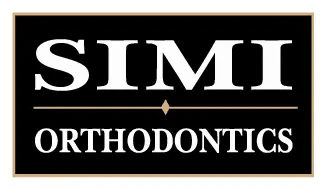Brushing and Flossing
Maintaining proper oral hygiene is essential during orthodontic treatment to ensure a clean and healthy smile. Braces can make brushing and flossing more challenging, so we recommend patients see their dentist every three months for professional cleaning and hygiene checks while undergoing treatment.
Regular brushing and flossing help prevent plaque buildup on brackets and bands, which can lead to gum disease or gingivitis and damage tooth enamel. Follow these tips to keep your teeth in top shape:
- Brush your teeth for at least two minutes after every meal. Angle the brush bristles in all directions around the brackets, especially between the gum line and the top of the bracket. Brushing gently is sufficient.
- Brush and floss before bed. Flossing once a day is recommended.
- Rinse or brush with a fluoride supplement before bed (which we will prescribe).
Eating with Braces
Curious about what you can eat with braces? It’s important to focus on what you shouldn’t eat to protect your orthodontic appliances:
- For the first day or so, stick to soft foods. Avoid tough meats, hard bread, and raw vegetables.
- Protect your braces by avoiding certain foods throughout your treatment.
Foods to Avoid
- Chewy foods: taffy, gummy candies, bagels
- Crunchy foods: chips, hard pretzels, nuts
- Sticky foods: caramel, toffee, chewing gum
- Hard foods: ice cubes, lollipops, popcorn kernels
- Foods you need to bite into: whole apples, corn on the cob, raw carrots
Chewing on hard objects like pens, pencils, or fingernails can also damage braces and prolong your treatment.
General Soreness
When you first get your braces, you might experience general soreness in your mouth and teeth that are tender to biting pressure for 3–5 days. For relief, take Tylenol or your usual headache or discomfort medication. Your lips, cheeks, and tongue might also become irritated for one to two weeks as they adapt to the braces. We will provide wax to place on the braces to alleviate discomfort in irritated areas.
Rubber Band Wear
Patients must cooperate with the orthodontist to ensure successful orthodontic treatment. Teeth and jaws will only move toward their corrected positions if rubber bands or other appliances are worn consistently as prescribed. Non-compliance and damaged appliances can prolong treatment time, so please follow the provided instructions diligently.
Loosening of Teeth
Don’t be concerned if your teeth feel loose during treatment. This is normal, as teeth must loosen before they can move into their new, corrected positions. They will firm up after the treatment is completed.
Loose Wire or Band
If a wire or band comes loose, don’t panic. This can occasionally happen. Here are the steps to manage it:
- Gently push the wire back: If a wire sticks out and causes irritation, use a blunt instrument (like the eraser end of a pencil) to gently push it back under the archwire, getting it out of the way.
- Reduce discomfort: Place wax or wet cotton on the wire to lessen the annoyance if irritation continues.
- Contact our office: Call us as soon as possible to schedule an appointment for repair.
Athletics
If you play sports, inform us so we can provide a protective mouthguard. A mouthguard prevents injuries to your braces and teeth, keeping your treatment on track. Wearing a mouthguard is essential whether in high-contact sports like football or low-contact activities like basketball. Regularly check the fit, as changes in dental alignment can affect effectiveness. This precaution helps ensure a smooth and successful orthodontic treatment.

